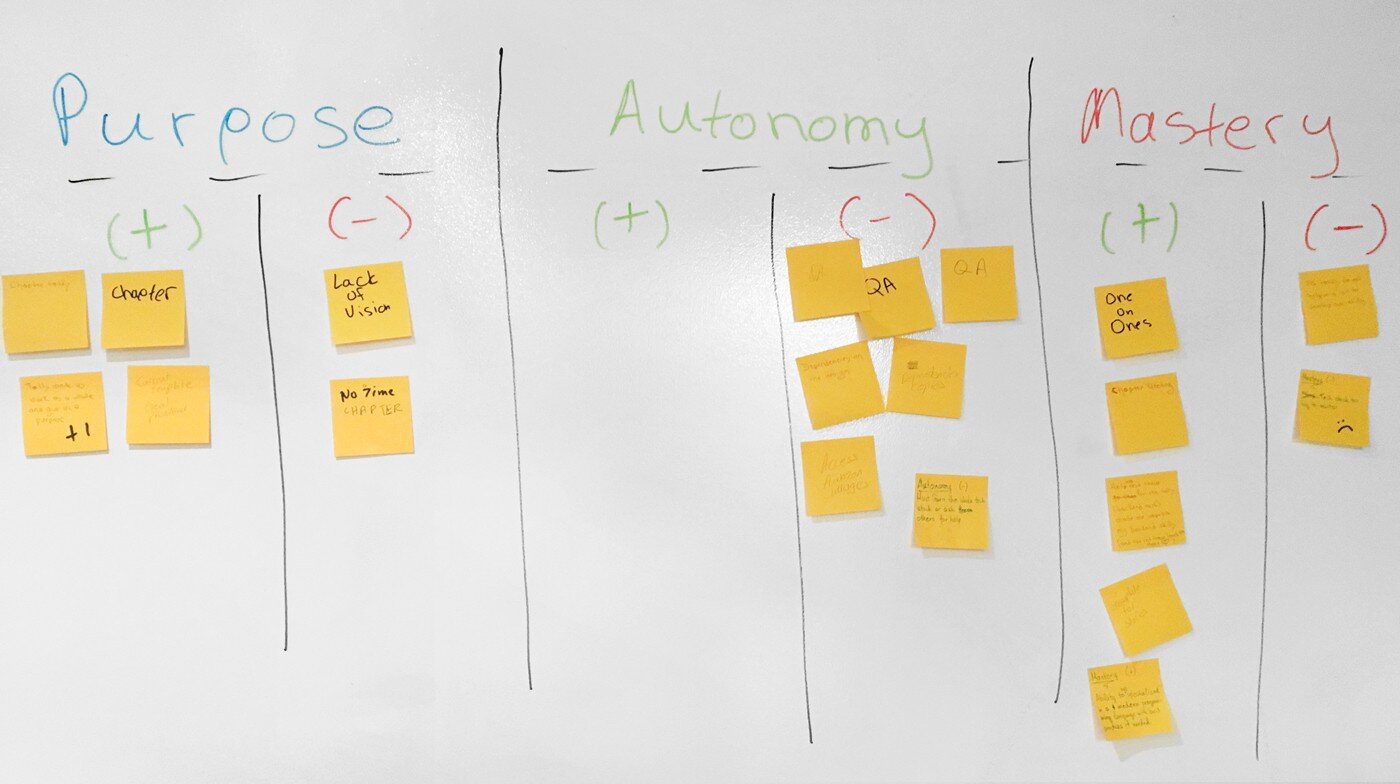How to use Daniel Pink’s Autonomy Mastery Purpose - Retrospective Ideas
What motivates people? There are moments that, as an Agile Coach, I lose faith! In such dark moments, I turn to the roots.
All of us have felt the difference extrinsic motivation, or intrinsic motivation does. If you have also read Drive by Daniel Pink, you are familiar with autonomy, mastery, and purpose.
If you haven't, I scratch the surface on a matter that I personally saw that helped make my retrospectives more engaging and people gaining value and feel happier after these.
What is autonomy - mastery - purpose?
Oh, let us see, we have intrinsic and extrinsic motivations. Both work but for different purposes.
Daniel Pink, in his book Drive, introduced autonomy, mastery, and purpose as motivation factors.
Autonomy is the feeling of being autonomous, self-directed. Mastery is the feeling I am getting better at things that matter, by getting feedback. Purpose is knowing why I am doing something.
What is Pink's theory about motivation?
According to Pink, our understanding of motivation shows that there is a certain kind of reward that we use in our everyday life, with our kids, or in our work. That is the "If... then" reward; if you do A, then you get B. Simple and straight.
According to Pink, these "If... then" rewards are useful for simple short term tasks and help us focus.
These types of rewards do not work well for complex work, though.
By giving autonomy, mastery, and purpose, we trigger intrinsic motivation factors.
How do you motivate your team in agile retrospective?
When I am stuck, I always find my way back by watching the video “The surprising truth about what motivates us” by The RSA. If you want to watch it its here.
If not, let me give you a short summary.
Surprisingly enough, and inline with Daniel Pink, the things that actually motivate people are not money or rewards, but rather “Autonomy — Mastery — Purpose.”
So, after the countless times I have watched it, a new retrospective activity rose up and, in particular, an activity for gathering data.
I, therefore, present you with the “Autonomy — Mastery — Purpose” retrospective activity.
Retrospective Activity Goal
This activity's goal is to guide the team back to the primary factors that actually motivate them. It is excellent for groups that are under a healing phase after a traumatic event. It can also be great for regular sprints or longer iterations.
How to run Autonomy — Mastery — Purpose retro activity
Draw three columns: Autonomy, Mastery, and Purpose.
Divide each column into two sub-columns, one for the things that worked in favor and one for those that worked against Autonomy, Mastery, and Purpose.
Ask the participants to share their notes on post-its regarding things that occurred during the sprint and strengthened or weakened the three pillars of motivation.
Gather data and drive the conversation about action items.
Case Study
In the following picture, it is evident that a lot of things worked in favor of Mastery, but nothing worked in favor of Autonomy.
Do not forget retrospect, retrospect, retrospect!
Resources:
I strongly recommend watching Daniel Pink's Ted Talk on motivation here (https://www.ted.com/talks/dan_pink_the_puzzle_of_motivation?language=en).
You can find the book Drive here (https://www.amazon.com/Drive-Surprising-Truth-About-Motivates/dp/1594484805), and it is also in Audible.
Categories
Follow Us Here


